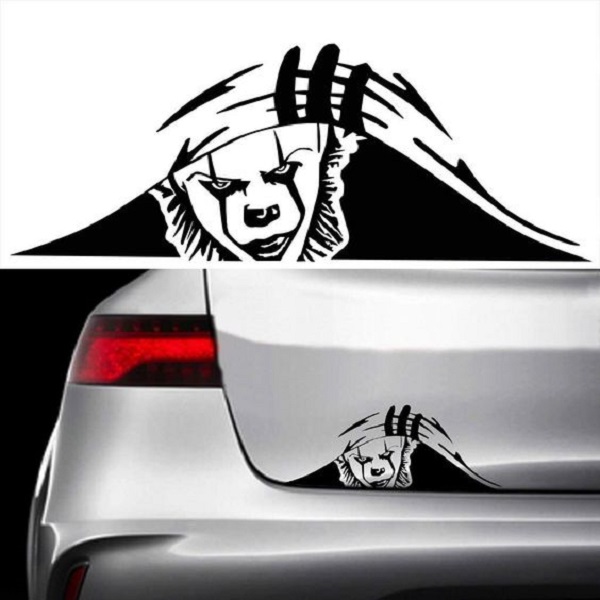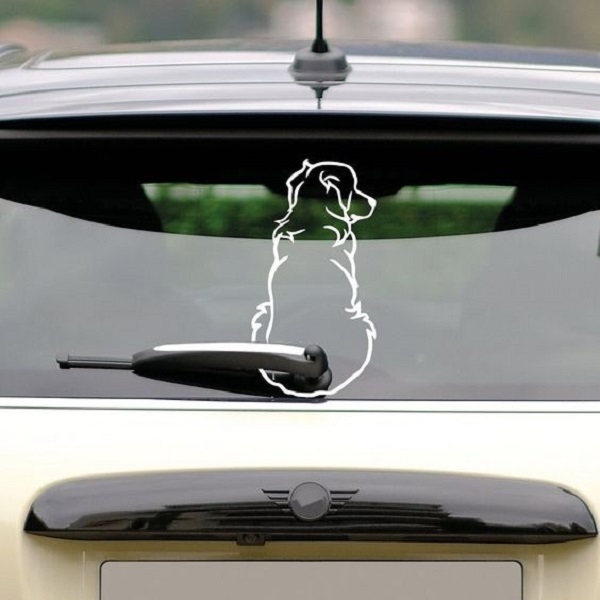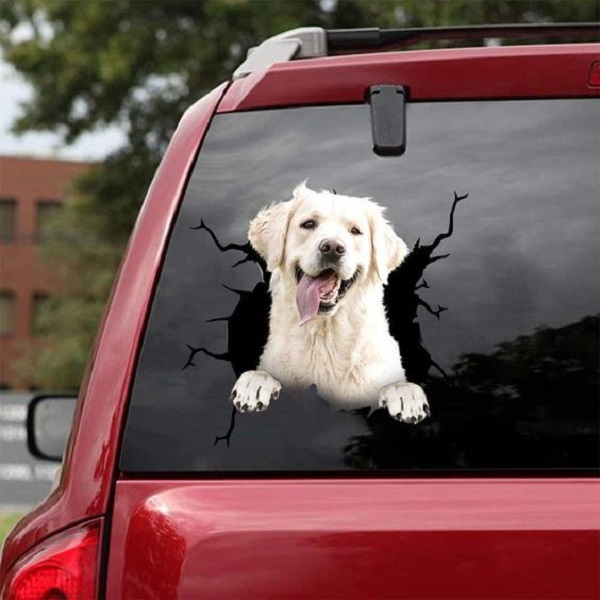Reasons to Promptly Cover a Broken Car Window
How to cover a broken car window from rain? Covering a broken car window is crucial for several reasons. Below are the key reasons why you should not delay this temporary repair:

- Prevents Injury: Shattered glass can cause cuts. A cover keeps sharp edges away.
- Discourages Theft: An open window can invite theft. A cover acts as a deterrent.
- Protects Against Weather: Unexpected rain can damage your car’s interior. A plastic cover can shield it.
- Maintains Privacy: A covered window protects personal items from prying eyes.
- Legal Compliance: Driving with an uncovered broken window may violate traffic laws.
- Improves Appearance: It looks better than a gaping hole, preserving your car’s aesthetic.
To sum up, covering your broken car window promptly can save you from potential harm, theft, weather damage, and legal issues. It’s a quick fix that can protect your car until you get a permanent repair.
Tools and Materials Needed for Temporary Fixes
When you need to quickly cover a broken car window due to rain or other elements, having the right tools and materials on hand is essential. Here’s what you’ll typically need:
- Heavy-Duty Trash Bags or Plastic Sheeting: Clear plastic is ideal to maintain visibility and protect from rain.
- Strong Tape: Packing tape or duct tape can effectively hold the plastic in place.
- Scissors or Utility Knife: These are necessary for cutting the plastic to the right size.
- Gloves: Always wear thick work gloves for protection against glass shards.
- Microfiber Cloth: Use this to clean the window frame and allow the tape to adhere better.
- Vacuum Cleaner: A shop vac or handheld vac works well for removing glass debris from your car.
These items are typically affordable and easy to find at your local hardware or automotive store. Remember to prepare these materials before you start the fixing process. With these tools and materials, you can create a temporary barrier to keep your car interior dry and safe from further damage caused by the elements.
Step-by-Step Guide to Covering Your Broken Car Window
If you’re caught in a sudden downpour with a broken car window, don’t panic. Here’s a simple, step-by-step guide to cover up and protect your vehicle from the rain intrusion:

- Wear Safety Gloves: Start by putting on thick work gloves. This guards your hands against sharp glass shards.
- Remove Broken Glass: Carefully pick up larger glass pieces and vacuum up smaller fragments. Keep the inside and around the window clean.
- Cut Plastic Sheeting: Measure and cut a piece of clear plastic sheeting or a heavy-duty trash bag. Make it larger than the window opening, for complete coverage.
- Clean the Window Frame: Wipe the frame with a microfiber cloth. This ensures the tape sticks well to the surface.
- Tape the Plastic: Secure the plastic over the window opening from inside the car. Use strong tape, like packing tape, making sure it holds firm at all edges.
- Double-Check the Seal: Look over the covered window. Press down on the plastic to check for loose spots. Add more tape if necessary to seal out rain.
By following these steps, you create a rainproof barrier that temporarily safeguards your vehicle’s interior. It’s a simple and effective way to manage until you get a permanent window repair. Remember, this fix is temporary. Aim to get a professional repair as soon as possible.
Safely Removing and Disposing of Broken Glass
When confronted with a broken car window, it’s critical to handle the shattered glass with care. Here’s how to do so safely:
- Wear Protection: Always use heavy-duty gloves to protect your hands from sharp pieces.
- Remove Large Shards: Carefully extract the bigger pieces of glass and place them in a sturdy container.
- Vacuum Small Fragments: Use a handheld vacuum to remove tiny shards from your car and around the window area.
- Clean Up: Wipe the window frame with a microfiber cloth to prepare for the plastic cover.
- Dispose Properly: Put all collected glass in a box lined with a trash bag, seal it, and label it as ‘Broken Glass’.
- Check Twice: Ensure all glass is picked up to prevent injuries to others and yourself.
Taking these steps not only minimizes risk but also sets the stage for a more effective temporary fix. After you cover your broken car window from rain, remember to seek a permanent solution as soon as possible.
Choosing the Right Type of Plastic for Temporary Covers
When picking plastic for a window cover, go for clear, heavy-duty options. Such plastics help maintain visibility and block rain effectively. Here are some top choices:

- Clear Plastic Sheeting: This is sturdy and provides good clarity. It’s a preferred choice for a temporary fix.
- Heavy-Duty Trash Bags: Make sure they are clear. These work well in emergencies and are easy to find.
When covering your car window, you need plastic that withstands rain and wind. Avoid thin, fragile materials that tear easily, like regular garbage bags. They don’t offer much protection and can cause more problems than they solve.
Using the right type of plastic keeps your car dry inside. It acts as a shield against rain until a permanent repair is possible. Remember, while any plastic can provide a barrier, not all will offer the same level of protection and visibility. Go for quality material to safeguard your vehicle effectively.
Tips for Securing the Plastic and Ensuring a Tight Seal
How to cover a broken car window from rain? Securing the plastic tightly is key to a good temporary fix. Follow these tips:
- Use Quality Tape: Pick strong tape like packing or duct tape for the best hold.
- Overlap Edges: Ensure the plastic overhangs the window’s edges by several inches.
- Press Out Air Bubbles: Smooth out the plastic to remove air and prevent flapping.
- Tape in Sections: Start at the top and work down, taping in small sections for control.
- Check Seals: Go around the edges after taping. Press firmly to check for loose spots.
- Add Multiple Layers: Use more than one layer of tape for a stronger, longer-lasting seal.
- Test the Seal: Gently push on the plastic. It should not move if sealed well.
These steps help you make sure rain stays out. If the seal breaks, add more tape quickly. After this, set an appointment for proper repair. Keep your temporary fix safe until then.
The Importance of Permanent Repairs and Professional Services
Once you have a temporary cover in place, getting a permanent repair should be your next step. A properly fixed window ensures safety, security, and durability. Here’s why you should prioritize professional services for a lasting fix:

- Safety Assurance: A permanent repair restores the structural integrity of your car. This helps protect you in accidents.
- Theft Prevention: A solid window deter theft attempts. It’s tougher to break than a plastic cover.
- Weatherproof: Repaired windows seal out weather better than any temporary fix. You avoid water damage inside.
- Noise Reduction: Closed, intact windows keep road noise out. This gives you a quieter ride.
- Legal Compliance: Fixed windows help you meet road safety standards. You avoid tickets and fines.
- Maintaining Car Value: A car with intact windows keeps its value. This matters for resale or trade-ins.
Professionals have the right tools and skills for a quality repair. They finish the job quickly and correctly. Plus, many offer warranties on their work. This gives you peace of mind. Don’t wait too long for a permanent fix. Book an appointment with a glass repair professional as soon as you can. Your temporary cover is a stopgap. Only a replacement window fully restores your car’s functions and safety.
Precautions to Take with Temporary Window Covers
When using temporary window covers, safety comes first. Here are important precautions to keep in mind:

- No Driving If Visibility Is Compromised: Do not drive if plastic covers block your view. Safety first.
- Short-term Solution: Remember, this is a quick fix. Plan for a permanent repair soon.
- Check Regularly: Inspect the cover often. Rain or wind may loosen it.
- Avoid Highways: If you must drive, stick to slower roads. High speeds might tear the cover.
- Keep Tools Handy: Have tape and plastic ready for quick fixes if needed.
- Use Clear Materials: Always choose clear plastics. They allow you to see better while driving.
- Be Weather Aware: Heavy rain or snow could weigh down the cover. Be prepared to reinforce it.
- No Automatic Car Washes: High pressure could rip off the plastic. Wash your car by hand.
By following these precautions, you reduce risks associated with temporary window covers. Always remember, getting a professional window repair is crucial. Drive cautiously if visibility is at all hindered and prioritize booking a permanent fix with a trusted service as soon as the opportunity arises.


